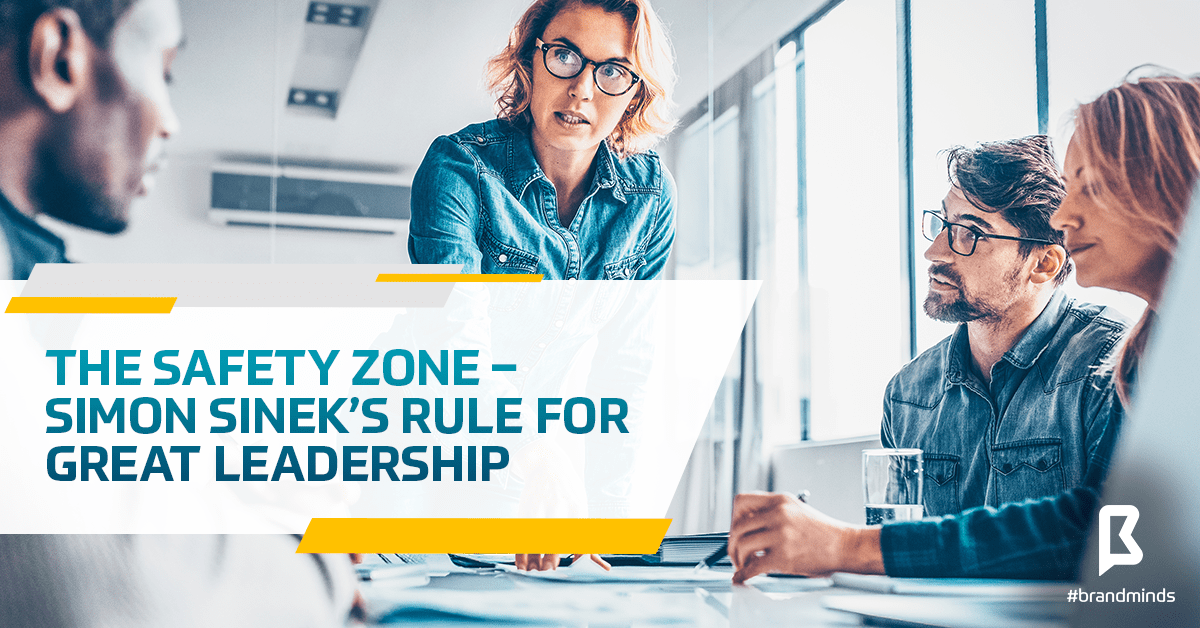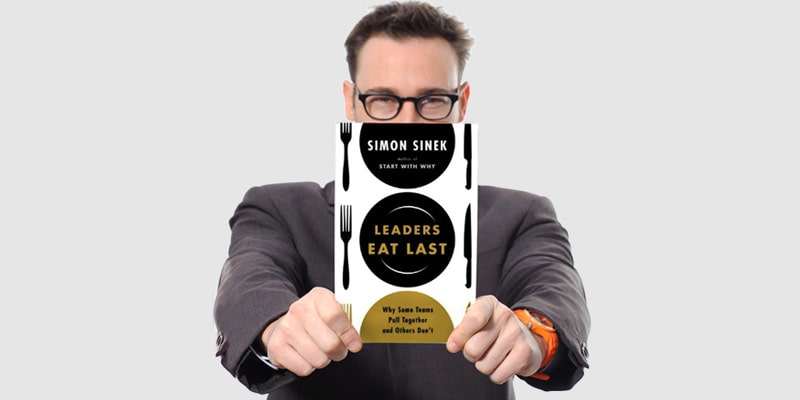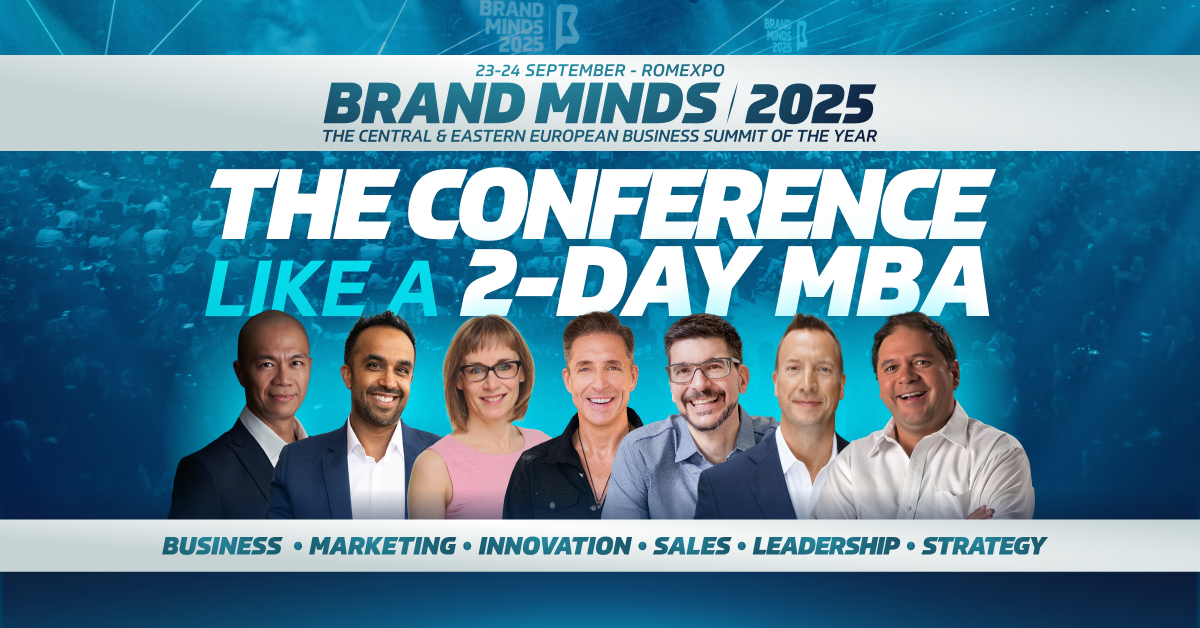
Simon Sinek – Leaders Eat Last
I recently finished Simon Sinek’s book Leaders Eat Last. It took me one hour each day for seven days to read it; it took Simon twelve months to write it. In Acknowledgements, in the last chapter of his book, Simon mentions working fourteen hours a day for many days on end. He did extensive research on the subject, talked to many people, he flew to Afghanistan and interviewed commanders in the American Air Force and the American Navy, where great leadership makes the difference between life and death.
Learn more: Simon Sinek – 8 Things You Didn’t Know About Him
Simon is a cultural anthropologist by training and it shows extensively in his book. Cultural anthropology is in my top three most interesting topics so you can imagine my enthusiasm – I couldn’t put the book down. But don’t worry, there is no scientific jargon. Simon’s writing flows effortlessly and it is easy to understand. It’s a great book and if you haven’t read it yet, I highly recommend you do so as soon as possible.

image source: trulyhumanleadership.com
Leaders Eat Last is a book on leadership; what makes it stand out from other books on the same topic is the author’s approach.
Simon Sinek takes a fresh and original approach to leadership – he looks at leadership through the lens of cultural anthropology. What makes the book very interesting is that his observations are supported by real-life business case studies.
It’s not the purpose of this article to review the book but to introduce you to one of Simon Sinek’s concepts –
The Circle of Safety.
What is The Circle of Safety?
The goal of great leadership is to inspire employees to deliver their best work and support the organisation to become successful. Notice I didn’t use the verb manage because employees don’t expect to be managed – they expect to be inspired.

What are leaders required to do to achieve this goal?
All they need to do, according to Simon Sinek is implement The Circle of Safety in their organisation.
First, let’s establish what a successful organisation is. Here is Simon Sinek’s definition of the successful organisation:
A successful organisation overtakes its competitors through innovation, inspires respect both inside and outside, has the highest level of loyalty among its employees, the highest retention rate and has the ability to overcome any challenges that may arise.
Second, in regard to the concept of safety, Simon notes the following: safety goes both ways in that the leader ensures the safety of his employees and in turn, the employees ensure the safety of the organisation.
Having said that, let’s delve into The Circle of Safety concept and discover how it serves and supports great leadership.
Leaders have one job only: to create a company culture in which employees cooperate naturally towards growing the business. That’s the safety zone: when employees come to work not for the company, but for themselves and their colleagues.
Learn more: Keeping Your Employees Happy Is More Than A Higher Paycheck
Trust the leaders, trust the employees
How do leaders create this type of company culture? By earning their employees’ trust.
The trust between the organisation and its employees is essential. To earn their employees’ trust, leaders must first empower them.

When you work with people you trust they will do their job better in order to deserve and keep your trust. These employees will show loyalty and commitment to the organisation without the need for exterior incentives like promises, financial bonuses or other perks.
When people feel appreciated by the organisation, they feel safe and relaxed; this allows them to care about and connect with their colleagues and start working as a team to support the organisation achieve success and prosperity.
Protection from outside threats
Trust means employees feel protected from threats coming from inside the organisation.
When there are no layoff threats looming over them or workplace rivalries they must fight in order to survive, employees are more prepared to protect the company from outside threats. Internal rivalries lead to the weakening of the company, making it less capable of standing up to potential dangers.

People first, revenues second
Leaders must make employees their top priority, not company sales or revenues. No financial goal should take precedence over the people. In times of business crises, Simon supports the strategy of sacrificing financial vectors to save the employees- not the other way around.
Unlike the threats from outside the company which are not in our control, leaders can control the threats from inside the organisation.
They can take steps towards eliminating intimidation, humiliation, biased attitudes, isolation, feeling useless, feeling rejected and being stressed. Workplace stress and anxiety have very serious consequences on our health and well-being- there’s no doubt about it. Statistics report a direct link between a negative workplace and a wide range of illnesses: from physical and mental fatigue to obesity, heart disease, burnout and eventually death. Increasing levels of detachment among employees are also causing low retention and engagement rates.

Lynda Gratton will teach you how to keep your employees engaged and motivated to do great work. Get your tickets today!
No safety zone means a dangerous environment for the organisation
When the organisation doesn’t provide a safety zone for its people, various case studies of prominent companies showed that it gives rise to negative feelings like paranoia, cynicism and employees with personal agendas. In short: a dog-eat-dog kind of culture where arrogance, inflating egos and fear make the rules.
When employees are left to fend for themselves, they withhold valuable information regarding an imminent threat to the organisation. The relationships between employees and leaders are weak and everyone seeks to satisfy their own interests. That’s what happened to Nokia. Nokia’s culture of status, shared fear and temporal myopia contributed to its downfall.
Leaders can fight negativity by creating a powerful culture based on a transparent set of values and beliefs. In this culture, employees are given the power to make decisions on their own because their leaders have previously shown trust and empathy. Which means building the safety zone.

A safe environment breeds innovation
It’s the natural cooperation between employees that makes the company powerful and resilient, not their products or services.
When people believe that everyone else inside the company will take care of them, they will contribute to the free exchange of information and data.
Sharing knowledge and information is what great leadership is all about
In a safe organisation, the leader is willing to share knowledge and information just as much as the next employee. Actually, it’s the leader who sets the tone and takes the first step down the path of sharing valuable information.
Numerous case studies and research data report that a favourable working environment leads to organisational stability and long-term high-level performances.
We also maintain our loyalty towards the employer, we help each other and we take pride in our work doing our jobs with passion.

A leader’s role is to set the tone
A leader’s role is to be the first who throws himself in front of danger to protect the group.
When the safety zone is in place, this doesn’t happen because it doesn’t have to. The safety zone protects him and the organisation. His people protect the company from outside dangers so the situation in which he has to sacrifice himself doesn’t arise at all.
The true social benefit of trust is reciprocity. Trust feeds itself. The organisation supports the development and growth of its employees in order for them to take on more important responsibilities.

A leader’s job is to teach and mentor his employees into becoming more competent and to earn their trust.
If the organisation doesn’t trust its people, it will monitor and surveil them, it will time their bathroom breaks and phone conversations.
Leaders rely on employees to provide firsthand information and data and employees rely on their leaders to provide direction, guidance and safety.
Join BRAND MINDS 2023 and learn how to become a better leader from global business thinkers James Clear, Nassim Taleb, Lynda Gratton, Neil Patel, Renee Mauborgne, Blair Singer, Anne-Marie Imafidon and Duncan Wardle!























